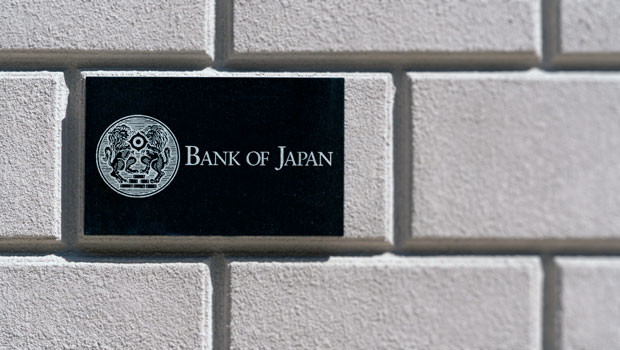Asia report: Markets mixed as Japan maintains interest rates

Hong Kong stocks led gains in the Asia-Pacific region on Tuesday, staging a rebound, while Japanese equities saw a marginal decline following the Bank of Japan's decision to maintain its monetary policy in its first meeting of the year.
Patrick Munnelly at TickMill said stocks in the region mostly rose after Wall Street's fresh record levels, although the gains were limited ahead of risk events.
“The region also processed the BoJ policy decision and reports of a potential Chinese equity market rescue package.
“The Nikkei 225 extended gains after the Bank of Japan maintained its ultra-easy policy, as widely expected.
“The Hang Seng and Shanghai Composite were somewhat varied, with Hong Kong boosted by reports of a potential equity market rescue package - China may consider a $278bn equity market rescue package, as reported by Bloomberg.”
Munnelly said tech names were also helped after China's gaming regulator took down draft rules for controlling spending on video games from its website.
“Conversely, the mainland lagged as initial support from the news of a potential equity market rescue waned, given that potential support measures remain speculation and more stimulus will likely be needed to revive the property sector.”
Most markets in the green, Japan equities fall
In Japan, the Nikkei 225 index fell by 0.8% to close at 36,517.57, while the Topix index dropped by 0.11% to reach 2,542.07.
Leading the decliners on Tokyo’s benchmark was T&D Holdings, down 2.89%, followed by Mitsui Mining and Smelting, off 2.63%, and Sumco, which lost 2.27%.
In China, the Shanghai Composite gained 0.53%, closing at 2,770.98, while the Shenzhen Component jumped 1.38% to reach 8,596.28.
China Enterprise and Arcplus Group led the gainers in Shanghai, with rises of 10.11% and 10.04%, respectively.
Hong Kong's Hang Seng Index saw an increase of 2.63%, closing at 15,353.98, led by Longfor Properties, up 9.22%; Xinyi Solar, rising 9.19%; and China Resources Land, which advanced 8.05%.
South Korea's Kospi index increased 0.58%, closing at 2,478.61, with notable gainers including Amore Group and HMM, with gains of 6.18% and 5.6%, respectively.
Australia's S&P/ASX 200 index rose 0.51%, closing at 7,514.90, as Arcadium Lithium jumped 4.67% and AUB Group added 4.58% by the end of trading in Sydney.
Across the Tasman Sea, New Zealand's S&P/NZX 50 gained 1.01% to 11,802.88, with Wellington’s performance being led by Vista Group International and Pacific Edge, which added 5.41% and 4%, respectively.
In currency markets, the dollar was last down 0.34% on the yen, trading at JPY 147.59, while it dropped 0.29% against the Aussie to AUD 1.5177.
The greenback also declined on the Kiwi, last falling 0.23% to change hands at NZD 1.6417.
On the oil front, Brent crude futures were last down 0.17% on ICE at $79.92 per barrel, while the NYMEX quote for West Texas Intermediate saw a slight decline of 0.11% to $74.68.
Bank of Japan stands pat on rates, as expected
In economic news, the Bank of Japan (BoJ) opted to maintain its ultra-loose monetary policy in its first meeting of the year, as expected.
The central bank's unanimous decision included keeping interest rates at -0.1% and continuing its yield curve control policy, which sets a reference upper limit of 1% for the 10-year Japanese government bond yield.
Additionally, the BoJ lowered its core inflation forecast for the upcoming financial year, with board members revising down their median growth forecast for core consumer prices, excluding food prices, to 2.4% for 2024, which starts in April.
That figure was down from the previous estimate of 2.8% made in October.
“The BoJ is likely to exit its negative rate policy in the second quarter, using the spring wage negotiations as a pretext, even though policy tightening probably won’t be warranted by the economic and inflation data by then,” said Duncan Wrigley at Pantheon Macroeconomics.
“Falling US yields have eased pressure on the Yen and created a window of opportunity for the BoJ to normalise policy.”
In South Korea, the producer price index showed signs of acceleration, rising by 1.2% year-on-year in December, compared to a 0.6% increase in November.
On a month-to-month basis, producer prices also rebounded, increasing by 0.1%, reversing the 0.4% decline seen in November.
Notably, South Korea's producer price index for the entire year of 2023 displayed a significant slowdown, with a growth rate of 1.6%, down from the 8.4% rise observed in 2022.
Elsewhere, Chinese authorities were reported to be contemplating a substantial package of measures valued at CNY 2trn to stabilise the country's stock markets, according to Bloomberg.
The financial support was expected to be drawn from offshore accounts of state-owned enterprises.
It followed a meeting chaired by Chinese Premier Li Qiang, during which the country's cabinet called for “stronger, more effective measures to stabilise the market and improve market confidence”.
Reporting by Josh White for Sharecast.com.